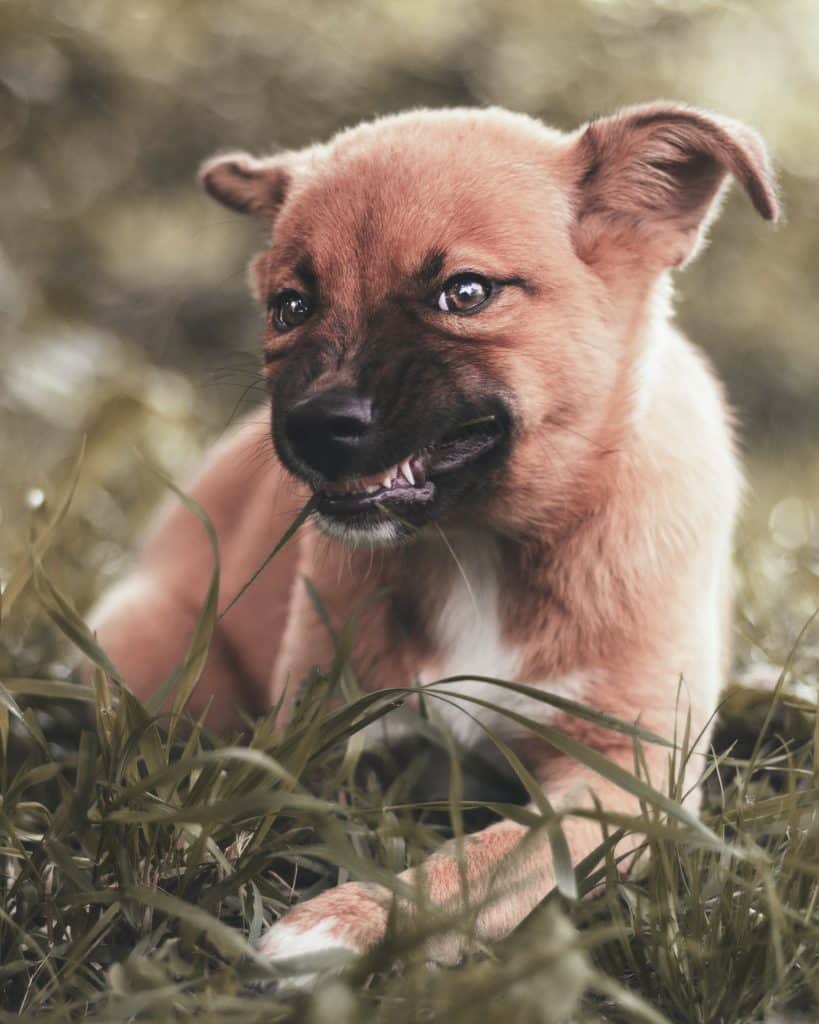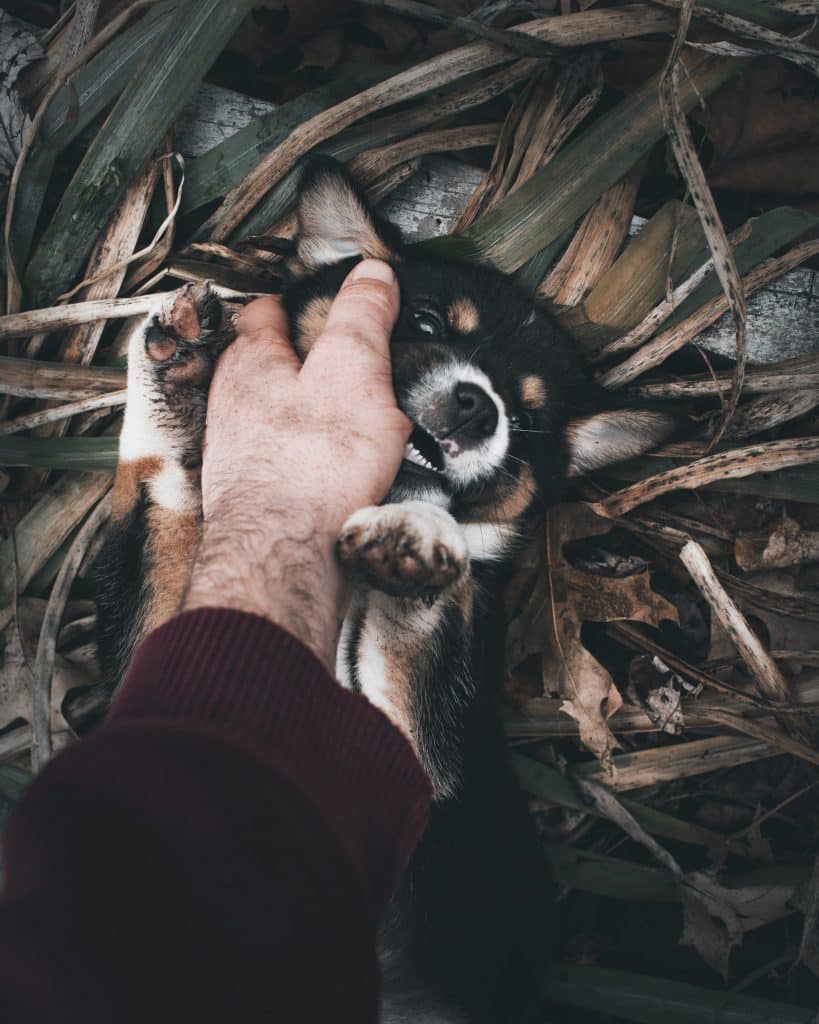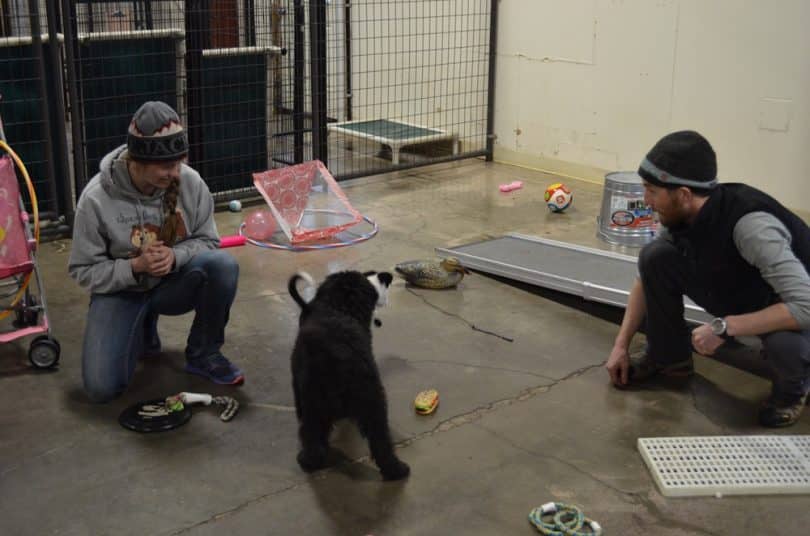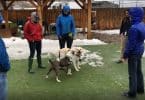Bullying is a serious issue in today’s society. Surprising to many would be the fact that this behavior is not limited to humans. It’s also quite common in the animal world as well. Luckily, bullying is an issue that can be taken care of, especially when an owner begins training at an early age.

The first thing you should do is determine whether your puppy is being a bully or if there is an underlying issue such as an unhealthy emotional state. Discovering which side of the line your puppy is on is extremely important because this is what will show you which training route you should take.
Here are the signs to look out for.
Puppy Aggression Vs. Underlying Issues
Bullying: More often than not, puppies that bully other animals will not seem upset while being aggressive. In fact, they will exhibit a sense of pleasure. When animals bully other animals, they will become excited and some will even have fun. Their behavior will be quite similar to a person bullying another person. For example, we’ve probably all seen a bully at one point in our life that gets a kick out of calling someone names or taking something from them like their lunch money. Another thing to look out for would be whether or not this behavior happens with all dogs or a select few. Most dogs with a bullying issue will get along with the majority of dogs but seem to have targets for some reason.
Underlying Issues With Emotional State: Dogs with an unhealthy emotional state will show some of the same behaviors, but there will be some noticeable differences. First of all, they won’t have fun or get excited while engaging in aggressive behaviors. They are more likely to seem upset. Plus, they won’t appear to single out certain dogs. Instead, they will have an issue with most other dogs. This can be caused by a number of different things ranging from lack of social interaction as a puppy all the way to abuse or neglect in their life.

The good news is that there is hope for a calmer and less aggressive future regardless of whether your puppy has underlying emotional issues, or they tend to just be a bully.
Here’s some more in-depth information on how to determine whether a dog has underlying issues or bullying behaviors.
How To Socialize A Puppy
The first step is to begin socializing your puppy at a young age. They need to learn which behaviors are acceptable, and which ones are not. Other puppies are great teachers when it comes to this. It’s in a dog’s nature to want to make friends. Being overly-aggressive, biting, and bullying are all behaviors that will lead to a lack of friends.

While socializing, it’s important that you redirect negative behavior and praise positive behavior. If you notice your puppy playing well with another animal, reinforce the behavior with a lot of praise or even a treat from time to time.
Keep a close eye on your dog while it socializes. If they begin acting in an aggressive manner, separate them for a while. This will teach them that their behavior is unacceptable and will lead to a loss of play privileges.
How To Stop A Puppy From Biting
It’s also important to work with your puppy on their acquired bite inhibition. This is a skill learned early in a dog’s life. Basically, it’s what determines how hard your puppy will bite in certain situations. Teaching this skill early in their life is extremely important because it’s something that cannot be learned in adulthood.
Here’s how you can begin teaching this skill. Simply allow your puppy to nibble on your hand. A gentle bite is fine, but if any type of pressure is applied, it’s time to redirect the dog’s behavior. Simply use a word such as “no” and then put some distance between you and the puppy. As mentioned before, your puppy wants to have friends. Distancing yourself will show them that their behavior will not be accepted by you. They will naturally begin to bite softer so that they gain your approval and have your friendship.

Aside from avoiding bullying or aggression issues, teaching your dog to have proper acquired bite inhibition is paramount to avoiding injuries to people or other animals later in the dog’s life. No matter how much we may love dogs it’s important to remember that they are animals that have the potential to bite. Your puppy learning how hard to bite in different situations can help you avoid serious issues in the future. The idea is to keep injuries to a minimum, especially when it comes to accidental bites.
How To Calm An Aggressive Dog
The best thing to do is make sure your puppy is well-socialized and keep an eye on their behavior, as well as the other dog’s behavior at all times. Step in when you need to and redirect your puppy’s behavior or separate them for a time out.
Watch this video to learn more about acquired bite inhibition and its importance in a dog’s life.
On a side note, a dog laying on their back was considered to be a submissive behavior at one time. However, several studies have been conducted that have found that it’s not a submissive behavior during playtime in most cases. It’s actually a tactical one. It gives the dog on their back an opportunity to push off on the other and gain access to their neck. Just a fun fact I thought you might like to know.
Learn more about this behavior in the following clip.
So, there you have it. Follow these tips, spend a lot of time socializing your puppy, and keep a close eye on the situation. It won’t be long before your puppy leaves their bullying tendencies behind for good.



